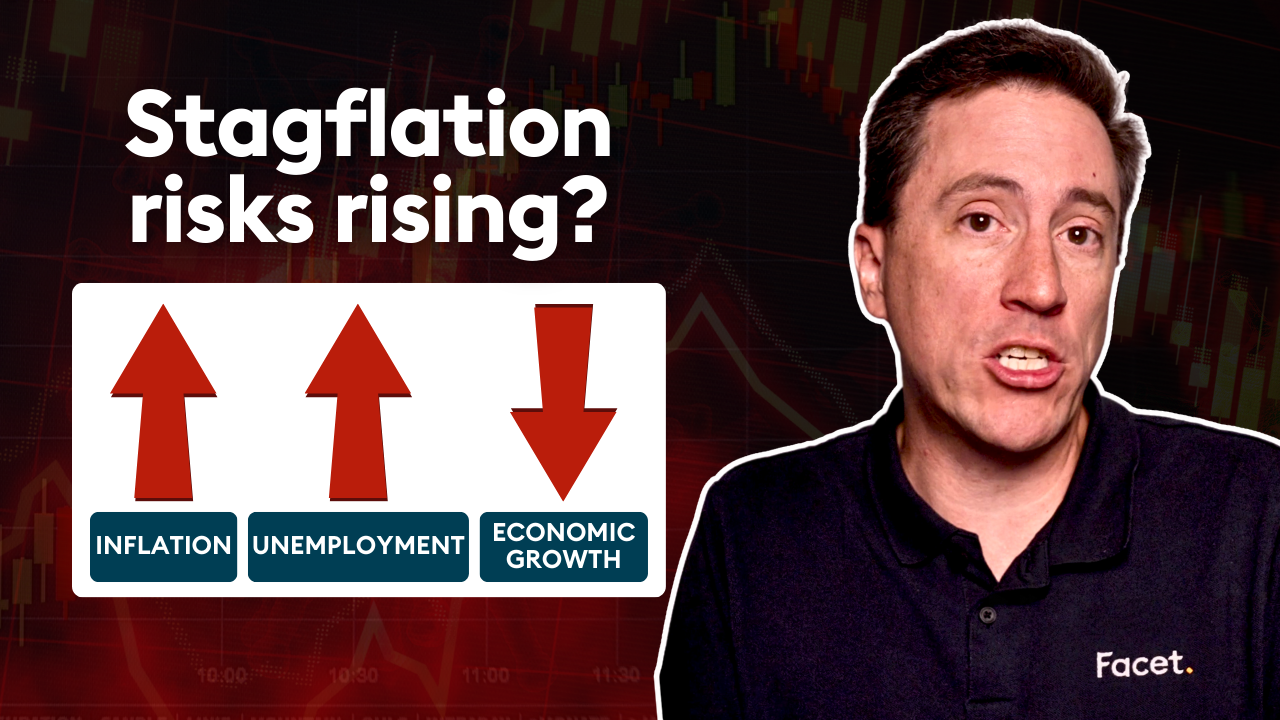
Key takeaways
- Many of the assets traditionally thought to provide inflation protection have been disappointing in 2022
- Most of these assets have produced poor returns in non-inflationary periods yet only have a spotty record when inflation occurs. That makes buying these assets more like a bet and less like a good risk diversifier
- Specifically, many of these assets perform poorly when interest rates rise, typically when inflation is high. This is especially true of gold, Treasury Inflation-Protected Securities (TIPS), and real estate
- The one inflation-related asset we have recommended is I bonds. Even these are more an opportunistic way to make more on your savings and less specific protection against inflation
- Overall we think a broadly diversified portfolio will likely produce better results over time, and adding specific inflation hedges is unlikely to help
As inflation has surged over the last year, interest in investments protecting portfolios against inflation has risen. Unfortunately, identifying the assets that actually do this is easier said than done. Many traditional inflation-proof assets have not performed as well as expected during this recent period, while others can be outright dangerous to own should inflation start to recede. And almost all of these so-called “inflation hedges” tend to underperform over the long-term compared to more traditional assets.
Challenges of inflation-proof assets
It is difficult to effectively protect one’s portfolio from inflation or “hedge” against it, as it is sometimes called. To see why, look no further than the disappointing results from traditional inflation-proof assets in 2022.
| Asset Type | 2022 Year-to-Date Performance |
| Gold | -3.46% |
| Treasury Inflation-Protected Securities | -4.96% |
| Real Estate | -12.44% |
| Commodities | +23.49% |
Three of the four of these lost money this year despite surging inflation. Even commodities, which are up year-to-date, have fallen 10% from their recent highs. So why have these assets disappointed? Each of these has a fatal flaw (if not more than one) that results in actual performance not always correlating with a period of higher inflation. As a result, none of these asset types have worked as a hedge during this period and may not protect portfolios if inflation remains high in the future.
5 types of inflation-proof assets
Here is why these “inflation-proof” assets are ineffective at protecting against today’s inflation.
Gold
Perhaps the inflation asset we get asked about the most is gold. In reality, gold is not an inflation hedge so much as it is a currency hedge. The idea is that the fundamental value of gold is stable. So, if the value of paper currency declines, the price of gold denominated in paper currency should increase. When inflation is high, that suggests the currency’s value is falling since the definition of inflation is that the currency is able to buy less.
Unfortunately, this hasn’t happened. So far in 2022, gold has fallen a bit more than 6% despite surging inflation in the U.S. So what gives? Gold’s first problem is that U.S. dollars have become more valuable in 2022, not less, at least as measured by other currencies. The dollar is at or near multi-decade highs vs. the euro, the yen, sterling, and a number of other currencies around the world. As a result, global investors have found it more comforting to own dollars than to buy gold.
The second problem gold has is that interest rates have surged. Gold doesn’t pay any interest. When short-term interest rates were zero, this wasn’t a problem. But now that rates are rising, many investors would rather earn some income than sit with gold.
The final issue is the Federal Reserve’s reaction to inflation. This is best illustrated by looking at gold’s performance before and after the Fed’s first rate hike, which came on March 16. At that point, gold was up 5.4% year-to-date.
Since then, the Fed has become much more aggressive about fighting inflation, both in terms of their words and actions, having hiked interest rates several times in the ensuing months. As a result, markets have begun to assume the Fed would eventually prevail and inflation would fall. If inflation is on the way down, gold isn’t so attractive anymore. As a result, gold prices have been down 11% since that first rate hike.
These three problems illustrate why gold is a tricky asset to own, even if you correctly guess that inflation is coming. Especially given that all three of these issues are intertwined and, therefore, could easily happen again the next time inflation is high.
Largely, the dollar is surging vs. other currencies because U.S. interest rates are rising. Global assets tend to flow to countries where rates are higher, which causes the currency value to rise. Interest rates are higher because the Fed is hiking rates to combat inflation. If we assume the Fed will always be interested in fighting inflation, we can assume that higher inflation will lead to higher rates and perhaps a stronger U.S. dollar. That makes gold exactly the kind of asset you do not want to own.
Treasury Inflation-Protected Securities (TIPS)
A much more direct inflation hedge is Treasury Inflation-Protected Securities or TIPS. TIPS are bonds backed by the U.S. Treasury, where the principal amount you are paid at maturity rises based on the Consumer Price Index (CPI).
For example, if you buy $10,000 face value of a TIPS today and the CPI rises by 10%, you now have $11,000 face value. That means that when the bond matures, you get an extra $1,000. It also means that the periodic interest payments you get increase by the same percentage.
So if you were getting 1% per year in payments, that would originally have been 1% x $10,000 = $100. After the 10% rise in CPI, it becomes 1% * 11,000 = $110.
Since TIPS are directly linked to CPI, they would seem like a very good inflation hedge. Unfortunately, they also have some fatal flaws.
While TIPS compensate investors for actual inflation, they are still subject to fluctuating interest rates. That’s a problem because interest rates are very likely to rise during a period of high inflation, particularly since the Fed will probably be hiking rates to attempt to fight inflation. For this reason, TIPS are likely to produce low, or even negative returns when inflation is high.
The other problem is that while the payments TIPS make are based on past CPI inflation, the price of a TIPS is based on the market’s expected future inflation. So if we have a period where inflation is temporarily high, even for a couple of years, but markets expect inflation to subside later, the price of TIPS won’t rise that much. Worse, TIPS will likely decline in value if we go from a period where inflation expectations are high to one where markets think the Fed will eventually bring inflation down.
The combination of these two factors is the main reason why the broad TIPS market is down 7% YTD so far.
Lastly, TIPS have a low yield before considering the inflation adjustment. The 10-year TIPS only yields 0.28%. For any bond, your best estimate for the future return is its yield, so this 0.28% suggests a pretty meager long-term return for TIPS if inflation does not remain high. For this reason, we would say that TIPS have a high “opportunity cost,” which means the return you are giving up by diverting some of your portfolio into TIPS is probably significant.
REITs
Real Estate Investment Trusts or REITs are companies that deal exclusively in real estate, which might include apartment buildings, offices, shopping centers, etc. They typically pay out most of the rental income they get to investors via dividends, which hopefully rise over time as rent income also increases. Some expected these stocks would work well as inflation protection because real estate should go up in value with inflation, and they should be able to raise rents along with inflation, which should boost the dividend on the stock.
However, REITs also have a fatal flaw when it comes to inflation. REIT's market values are based on the dividend yield, which is the dividend paid to shareholders divided by the stock price. E.g., if the annual dividend was $2 and the stock was priced at $40, the dividend yield would be 5%.
When interest rates were extremely low during 2021, a dividend yield of 5% looked great. But now, with interest rates having risen so much, it doesn’t look as attractive. So, if investors start demanding higher dividend yields, the fastest way that happens is if the stock price falls.
It isn’t that REITs are bad investments in general. In fact, the ETFs Facet clients own include an allocation to REITs as part of our well-diversified strategy. However, there’s no guarantee that REITs will perform especially well during an inflationary period. Therefore, thinking of these stocks as an inflation hedge will probably lead to the wrong decisions.
Commodities
Many investment advisors recommend a basket of commodities as inflation protection. This typically includes various raw materials, including everything from crude oil to copper to wheat. For many, it makes intuitive sense that if inflation is a problem, surely the price of these raw materials should rise too. Unfortunately, this is not always the case. For example, although oil prices rose in 2022, almost all other commodity types have fallen. The reason why points to the fatal flaws for commodities.
The first is the currency effect. Almost all of the commodities one finds in a fund or ETF basket are globally traded. For a U.S.-based investor, that means that the value of the dollar makes a big difference in how it is priced. By this, we mean the stronger the dollar is vs. other currencies, the more a dollar can buy on the global market. Since commodities are a global market, a stronger dollar tends to make commodities cheaper in U.S. dollar terms. That’s great if you are a U.S. consumer but not so good if you are a commodity investor. As we said in the section on gold, the dollar tends to strengthen when interest rates are rising in the U.S.
The second is that a lot of commodities are highly cyclical. This means that the price of the commodity fluctuates wildly based on the pace of global economic growth. When growth slows, the price of the commodity may plunge. This isn’t such a huge problem during inflationary periods, which tend to be when the economy is strong. However, adding commodities to a portfolio that already owns stocks actually increases the portfolio’s risk during a recession. We are seeing this play out now, as recession concerns have grown in the U.S., Europe, and China in recent months. Since June 1, the DBC commodity ETF is down 11%. In other words, commodities will tend to perform poorly at the same time your stocks are also performing poorly.
It gets worse for commodities, though. Not only do commodities make your portfolio perform worse during recessions, but they don’t always increase the upside potential during good times. Over the last 20 years, $100,000 invested in the Bloomberg Commodity index has returned 57% unannualized, meaning your original investment would be worth $156,710. The S&P 500 returned 573% during the same period, meaning your $100,000 would be worth $657,620.
Summing up commodities, they might work better than the other options we mentioned during inflationary periods, but they also are a major drag on your portfolio during recessions. Historically this has resulted in commodities actually increasing the volatility of a diversified portfolio while dragging down your returns.
Series I Bonds
Series I Bonds are a type of savings bond. They pay interest when the bond either matures or is redeemed, and the U.S. government guarantees the principal value. Unlike Treasury bonds, the value of savings bonds do not fluctuate, so the principal you get at redemption is known ahead of time whether you wait for maturity or not.
I bonds have a unique feature related to inflation. The interest rate on an I bond is made up of two components. The first is a fixed rate that is set when the bond is purchased and remains the same throughout the life of the bond. For I bonds purchased between May and October 2022, that fixed rate component is 0%. The second is a variable rate that is adjusted every six months and remains based on the current inflation rate as measured by the Consumer Price Index (CPI). Again for the May to October period, the six-month inflation rate was 4.81%. This is doubled to make the rate annualized, so the I bond accrues interest at a 9.62% annualized pace. I.e., 4.81% x 2 + 0.0%.
| Fixed Interest Rate | 0.00% |
| Semiannual inflation rate | 4.81% |
| Composite Interest Rate | 0.00% + (4.81% x 2) + (0% x 4.81%) |
| Composite Interest rate (annually) | 9.62% Interest Rate (Current) |
That is a very attractive return compared to other government-guaranteed options, but it is only fixed for the next six months. If inflation fell to 2% down the road, the interest accrual would also fall to 2% However, in the right circumstances, these can be a good way to earn a relatively high return on your savings. There are a few restrictions:
- You may only purchase $10k worth each calendar year.
- Bonds must be held for at least one year.
- Bonds sold in less than five years forfeit three months’ worth of interest.
For more details on I bonds and whether they fit your situation, talk to your planning team.
Final word
Inflation is very high right now, and concerns about high inflation have been a major reason why stocks and bonds have produced negative returns so far this year. However, the fact that inflation is currently high is already priced into the market.
If you try to bet on inflation-proof assets now, you are implicitly betting that the Fed will fail in its efforts to quell inflation. We think this is a poor bet. In fact, the Fed has explicitly pledged to keep raising interest rates until inflation is back to normal, even if that results in a recession.
If we take them at their word, that means that if inflation pressure remains high, interest rates will keep rising, the dollar will keep getting stronger, and commodity prices will get hit by recessionary forces. So we have a hard time seeing how any of these assets are especially good additions to portfolios given the current market and economic conditions.
Tom Graff, Chief Investment Officer
Facet Wealth, Inc. (“Facet”) is an SEC registered investment adviser headquartered in Baltimore, Maryland. This is not an offer to sell securities or the solicitation of an offer to purchase securities. This is not investment, financial, legal, or tax advice. Past performance is not a guarantee of future performance.


